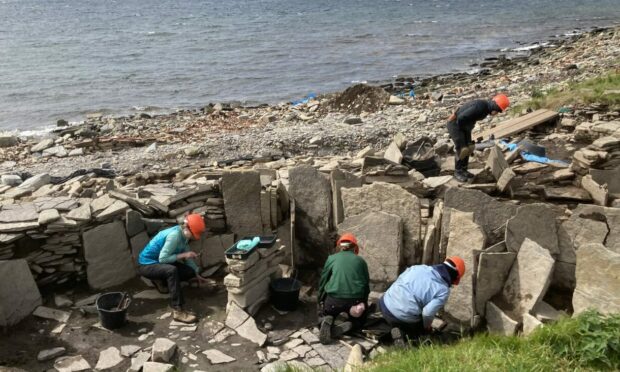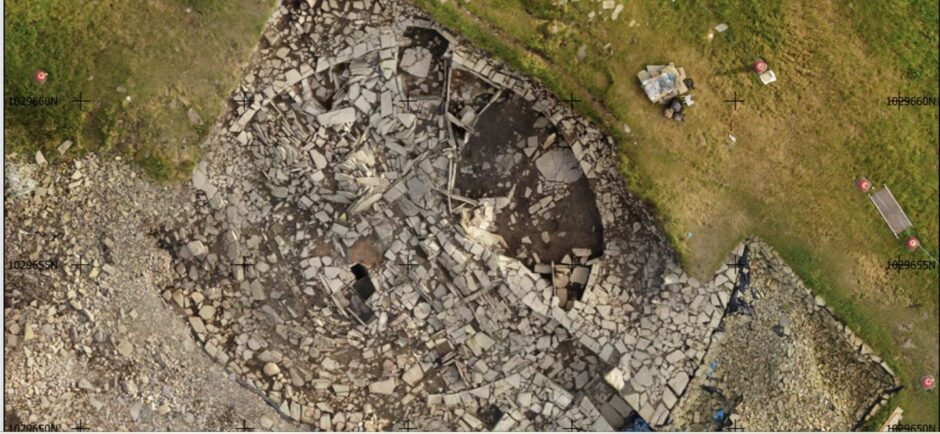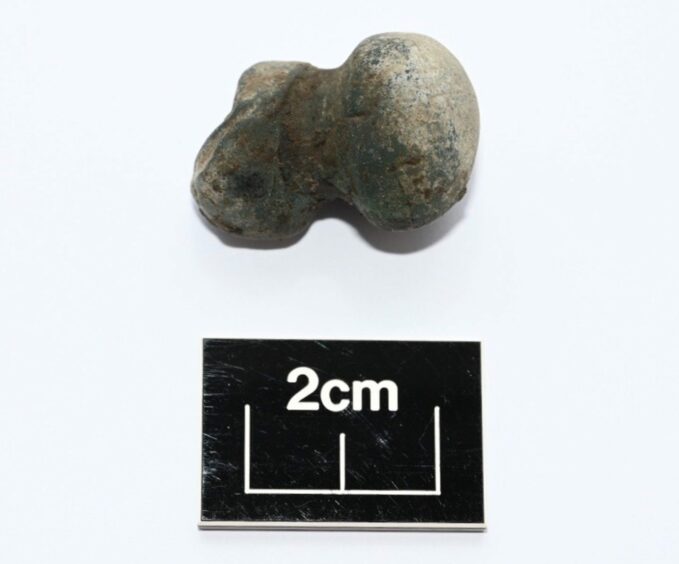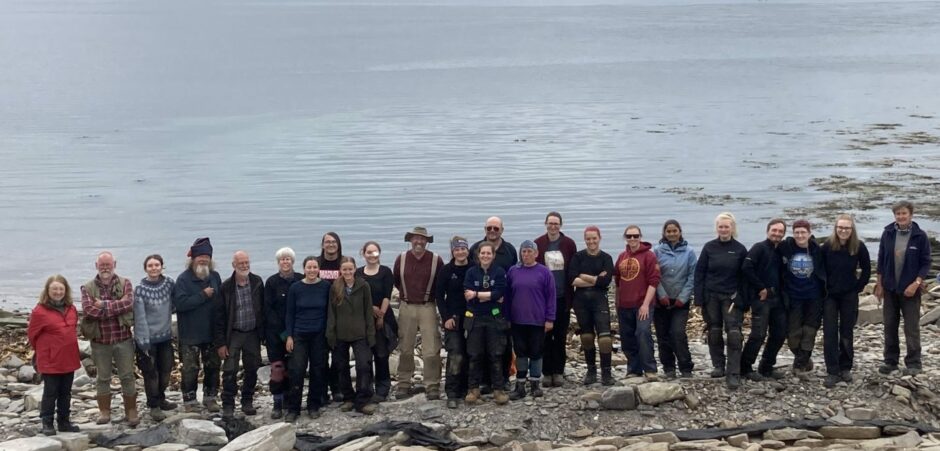A team of archaeologists have been trying to save the remains of a Viking settlement in Orkney from being washed away by the sea.
The researchers are battling against erosion to uncover the secrets of an Iron Age settlement on the island of Rousay.
A team from the University of Bradford led by Stephen Dockrill and Julie Bond are organising the rescue effort.
Mr Dockrill says there is a “race against tide and time” as archaeology is being “sucked out like a vacuum” by the sea.
The site, at the Knowe of Swandro, was once a large settlement occupied from around 1000BC to 1200AD.
On the site are Iron Age roundhouses, Pictish buildings, a Viking settlement and a Norse Long Hall. It is considered an area of extreme importance due to the insight the evidence can provide on the people who lived there.
However, about one third of the site has already been destroyed.
Erosion makes the site ‘unstable’
Although coastal erosion is the biggest threat to unearthing sites like this, it also provides a unique opportunity to see how the buildings were constructed.
Mr Dockrill said: “This is a really unusual case because we’re actually on the boulder beach. It is not a cliff face erosion it is actually a beach situation where we’ve got pebbles covering the site.
“So the whole site becomes unstable and starts to move and collapse. We are using laser scanning to record the archaeological evidence before it vanishes.
“It is literally sucking out the archaeology. It’s like a big vacuum and nobody’s really seen this before. This gives us a new understanding on how to manage sites like this in the future.”
Orkney has had countless archaeological digs, with settlements like Skara Brae helping to tell the story of its unique 5,000-year history.
What have they learned so far?
The Swandro excavation has recently uncovered jewellery, bone tools, pottery, a late Roman coin, and a rare Iron Age glass toggle bead.
Animal bones have also been uncovered in the buildings, which suggests feasting activities took place there.
Mr Dockrill said: “The site is rich in cultural material. It all begins to build a picture up of people in the past living here.
“It looks as if the roundhouse was finally pulled down and the stone from it was robbed when the Vikings came in. So yeah, it’s a really interesting story.”
How long will the site survive?
The team were last on the site in 2019, but because of Covid they have not been able to return since then.
After this week’s excavation, the team will be leaving again until next summer.
Mr Dockrill adds: “Since 2019 some of the walls have dropped by 30 centimetres, which is quite a lot.
“So we’re going to be putting sandbags to protect it the best we can, hoping that we can get back next year.”
The University of Bradford won the prestigious Queen’s Anniversary Prize in 2021 for its world-leading work in developing archaeological technology and techniques.
During the dig, they have been working with the Swandro Orkney Coastal Archaeology Trust, who have been posting regular updates of the dig on their website.
The trust is run by volunteers and is funded by donations to help save one of Orkney’s best archaeological sites.
The excavation is part of Scotland Digs 2022 campaign to promote the summer dig season and get more people to enjoy archaeology.














Conversation